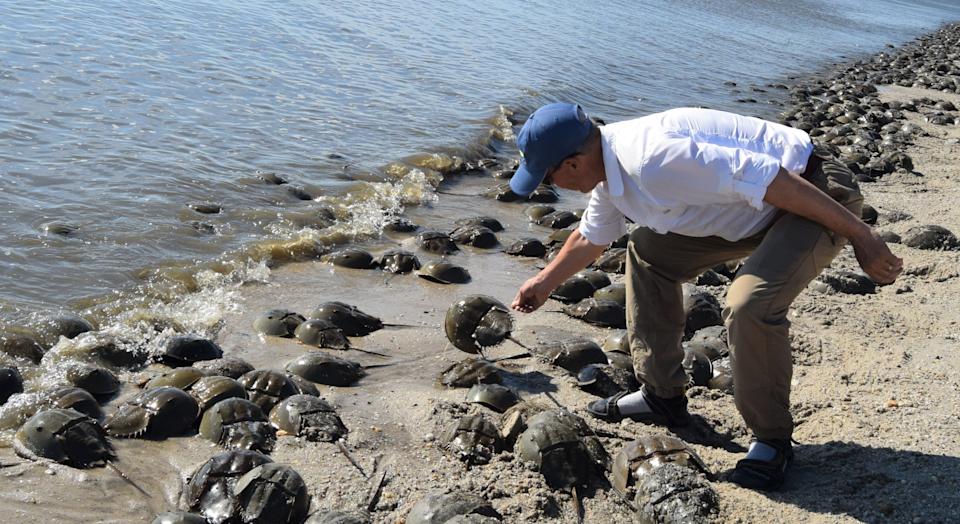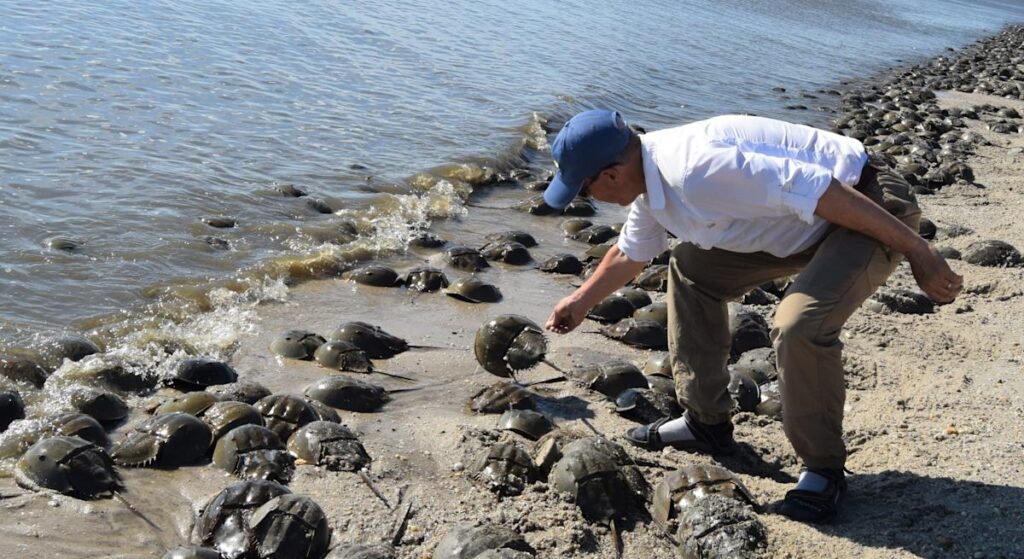The best time to see the ancient wonders that are horseshoe crabs is now, as they return to Delaware Bay beaches for spawning season.
Horseshoe crabs first developed 540 million years ago in the Paleozoic era, more closely related to arachnids than crabs. The amazing arthropods lived through the age and extinction of dinosaurs and many, many other species, and are sometimes called “living fossils.”
Today, the shallows of the Delaware and Chesapeake bays are essential habitat for one of the four living horseshoe crab species: the Atlantic horseshoe crab.
When and where to see horseshoe crabs
Horseshoe crabs gather on Delaware Bay beaches to spawn from May through early June, with the most seen during new and full moon high tides. The next new moon is Tuesday, May 27. The next full moon is Wednesday, June 11.
Horseshoe crabs at Slaughter Beach.
The best places to see them include Slaughter Beach, DuPont Nature Center, Kitts Hummock and Pickering Beach, but horseshoe crabs can be spotted up and down the Delaware beaches for most of the warm season. There is no cost to visit these beaches, nor do you have to pay for parking, but leave no trace of your presence.
Many horseshoe crabs become stranded and die when they get flipped on their backs. You can help them by turning them over by the edge of their shell. Never move them by their tail.
Wildlife: 5 most snake-infested lakes and ponds in Delaware. What you need to know before going out
After the spawning season, some Delaware beaches are covered in dead horseshoe crabs, yet stranding only accounts for an estimated 10% of horseshoe crab deaths.
Here are a few fun facts about horseshoe crabs, according to the Ecological Research and Development Group, a nonprofit horseshoe crab conservation group.

Ecological Research and Development Group founder and President Glenn Gauvry flips horseshoe crabs.
-
Horseshoe crabs have seven eyes.
-
Horseshoe crabs are harmless to humans. They cannot bite or sting. Their pointy tail is used for movement, not as a defense mechanism, and their “claws” are not strong enough to pinch.
-
A female horseshoe crab lays about 90,000 eggs each spawning season.
-
The Atlantic horseshoe crab is the only horseshoe crab species that lives outside Indo-Pacific waters.
-
More horseshoe crabs are killed by the bait-fishing industry than any other cause, aside from natural death.
-
Another major cause of horseshoe crab mortality is the medical industry, which uses their blood to test for toxins in vaccines.
-
At least 11 species of migratory shorebirds stop on the Delaware Bay during their annual trip to the Arctic, and they depend on horseshoe crab eggs to gain the energy needed to make the long flight.
-
June 20 is International Horseshoe Crab Day.
Delaware beaches: All about the new Rehoboth Beach Patrol Headquarters on the boardwalk
Shannon Marvel McNaught reports on southern Delaware and beyond. Reach her at [email protected] or on Facebook.
This article originally appeared on Delaware News Journal: When’s the best time to see horseshoe crabs on Delaware Bay beaches?
Read the full article here


